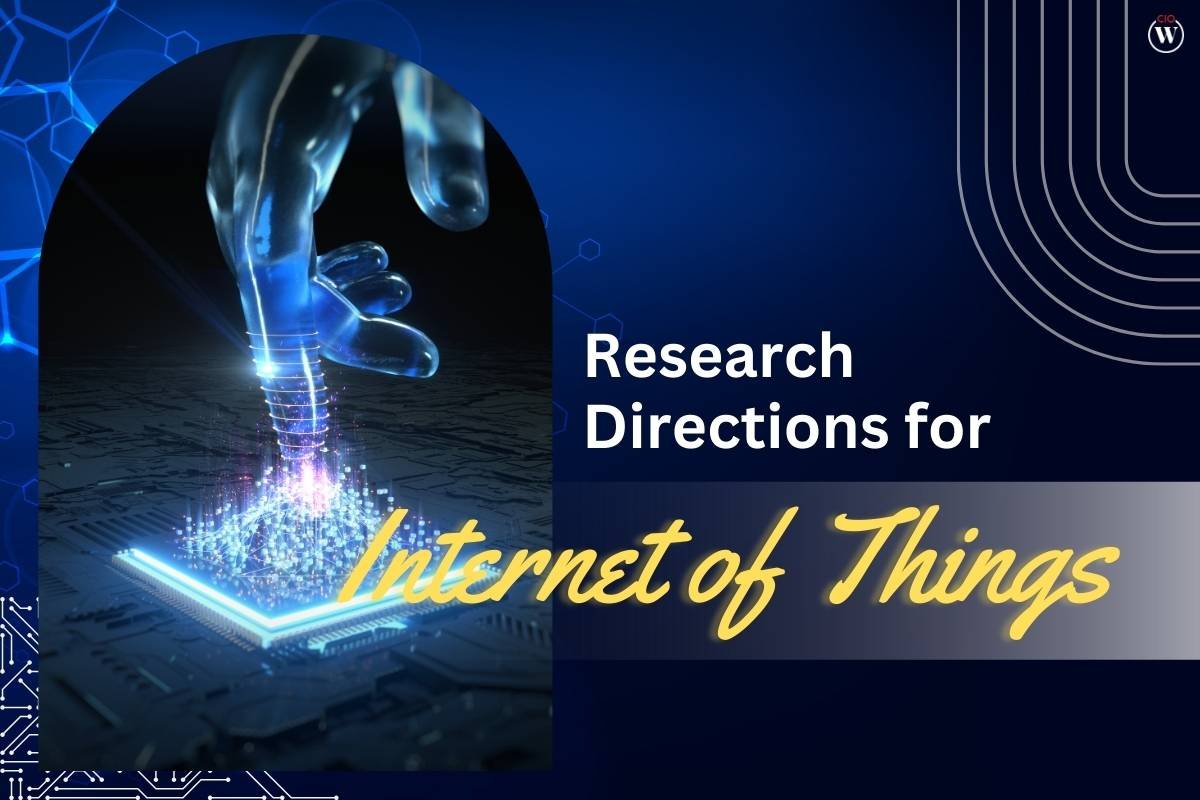The invasion of the Internet of Things is powered by the availability of a high volume of smart sensors, radio frequency identification, and suitable communication technologies and protocols. The increase in the scope of these fields has lead to many diverse and joint research. Via research directions, the IoT has drawn too much attention as it has the ability to solve difficult problems with ease. The Internet of Things (IoT) has transformed the way we interact with technology, connecting an ever-expanding network of devices and enabling data-driven decision-making. As IoT continues to evolve, ongoing research is essential to unlock its full potential. A variety of IoT research directions have opened up post the invasion of the internet.
Let us have a look at 5 IoT research directions:
1. Security and Privacy Concerns: A Pervasive Research Direction
IoT research directions cannot be discussed without addressing the paramount concern of security and privacy. With billions of interconnected devices sharing sensitive data, ensuring the confidentiality and integrity of information is critical.

Researchers are exploring advanced encryption techniques, blockchain technology, and authentication methods to safeguard IoT ecosystems. Additionally, privacy-preserving algorithms are being developed to allow data sharing without compromising individuals’ privacy. The intersection of security and IoT research directions is vital because organizations rely on secure data to make informed decisions. Protecting IoT networks from cyber threats and unauthorized access is essential for maintaining trust and data integrity.
2. Scalability and Interoperability: Bridging the Gap
Scalability and interoperability challenges remain at the forefront of IoT research. IoT ecosystems often involve devices from various manufacturers, operating on different protocols and platforms. Ensuring seamless communication among these devices is a complex endeavor.
Researchers are working on standardized protocols, middleware solutions, and edge computing techniques to enhance IoT interoperability. Scalability is also a key focus, as IoT networks must accommodate an ever-growing number of devices. This research direction is crucial for organizations aiming to deploy IoT solutions across their operations. A scalable and interoperable IoT infrastructure simplifies device management and data integration, facilitating better decision-making processes.
3. Edge Computing and Real-Time Analytics: Speeding Up Decision-Making
Edge computing, coupled with real-time analytics, is a research direction poised to revolutionize IoT applications. By processing data closer to the source (i.e., at the edge of the network), latency is minimized, enabling quicker responses to events and reducing the burden on central servers. Researchers are developing edge computing algorithms and hardware to facilitate real-time data processing. These advancements empower organizations to make immediate decisions based on the insights derived from IoT-generated data. Incorporating edge computing into IoT ecosystems enhances decision-making by providing timely, context-aware information. This is particularly beneficial for industries requiring rapid responses, such as manufacturing, healthcare, and autonomous vehicles.
4. Energy-Efficient IoT: Sustainable Research Direction
As IoT devices proliferate, energy consumption becomes a critical concern. Traditional batteries may not suffice for devices expected to operate for years without replacement. Research in energy-efficient IoT encompasses low-power chip design, energy harvesting, and optimization algorithms.

These innovations aim to extend the lifespan of IoT devices while reducing their environmental impact. This research direction aligns with organizations’ sustainability goals. Energy-efficient IoT devices can reduce operational costs and environmental footprints while ensuring continuous data collection for informed decision-making.
5. AI and Machine Learning Integration: Enhancing Decision-Making Capabilities
The integration of artificial intelligence (AI) and machine learning (ML) with IoT is a burgeoning research direction. AI and ML algorithms can process vast amounts of IoT data, extract patterns, and provide valuable insights. Researchers are exploring AI-driven anomaly detection, predictive maintenance, and autonomous decision-making within IoT systems. These advancements empower organizations to make more accurate and timely decisions based on data-driven predictions. This research direction strengthens organizations’ decision-making capabilities by harnessing the full potential of IoT data. It enables proactive actions, leading to optimized operations and improved resource allocation.
The Interconnected Nature of IoT Research Directions
Research directions in IoT are inherently interconnected, as they collectively address the multifaceted challenges and opportunities presented by IoT technology. Security and privacy are essential foundations, ensuring data integrity and user trust. Scalability and interoperability facilitate the seamless integration of IoT devices, while edge computing and real-time analytics enable rapid, context-aware decision-making. Energy-efficient IoT contributes to sustainability goals, while AI and ML integration elevate decision-making capabilities to new heights.

An Analysis of the Architecture of the Internet of Things.
IoT architecture involves devices, network structure, and cloud technology. It allows IoT devices to interact with each other.
Benefits for Organizations: Informed Decision-Making
The IoT research directions outlined above hold immense potential for organizations seeking to harness the power of IoT for better decision-making:
- Enhanced Security:
Robust security measures instill confidence in data integrity, fostering trust in decision-making processes. Decision-making is one of the most important aspects of a business. Data security also gets a boost via the Internet of Things.
- Improved Interoperability:
A cohesive IoT ecosystem streamlines data integration, providing a holistic view for more informed decisions.

- Real-Time Insights:
Edge computing and real-time analytics enable organizations to react swiftly to changing conditions and emerging opportunities. It helps to predict the future and implement the same in a better manner.
- Sustainability:
Energy-efficient IoT reduces operational costs and aligns with environmental sustainability goals.
- Advanced Analytics:
AI and ML integration enable organizations to derive valuable insights from IoT data, driving informed, data-driven decisions.
Conclusion
IoT research directions are pivotal for shaping the future of this transformative technology. These directions, driven by interdisciplinary collaboration, offer the potential to unlock new capabilities and address existing challenges, ultimately enabling organizations to make more informed, efficient, and sustainable decisions through the power of the Internet of Things.









